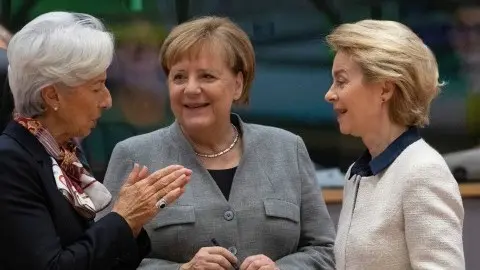Finland: Better than others, but far from immune to a slowdown
Don’t let those rosy numbers fool you, the Finnish economy is battling structural problems and political uncertainty
2019 exceeds expectations
The Finnish economy continues to outgrow the eurozone average. In fact, with 0.7% growth in the third quarter, Finland has maintained its position as one of the strongest growing economies in the eurozone this year. Revisions to the second quarter caused annual growth in GDP to accelerate substantially to 2.2%. Strength in domestic demand has been the main driver behind the decent growth numbers as household consumption and investment both grew by more than 1% in the third quarter.
Strength in household consumption comes as a slight surprise given the relatively slow growth in wages and shrinking employment in the third quarter. Unemployment has not yet turned higher, indicating that labour market resilience remains decent for the moment, but it will be difficult to maintain this fast-paced household consumption growth without support from the job market.
Strong domestic demand has also impacted net exports, as imports grew far quicker than exports in the third quarter. The export environment has become less benign globally and Finland is not immune to this. Export growth has slowed substantially over the course of 2019 and while growth to trade partners outside the EU had been faster, both intra- and extra-EU trade growth have declined to around 0% year-on-year. Out of the larger Finnish trade partners, China has seen the largest decline with a drop of 17.5% year-on-year in exports in goods in September. The US saw a large decline in August after which exports in goods bounced back.
This growth pace is hard to maintain next year
Looking ahead to 2020, growth is likely to be curbed further as the export environment continues to be plagued by trade war concerns. Moreover, limits to employment growth are likely to subdue domestic demand growth. Even though we expect some moderation regarding the trade outlook, uncertainty will likely remain for some time to come. As many of Finland’s largest export partners are directly or indirectly suffering from increased tariffs, this will negatively impact the trade outlook for Finland in the year ahead.
Domestic demand is set to be subdued over the course of next year, even though it is expected to contribute positively to growth, as employment growth has slowed while investment tends to moderate in times of uncertainty. The employment outlook is modest at best as labour shortages have been increasing while aggregate labour demand has been softening. This means that mismatches in the labour market are curbing potential, which in turn has an impact on the potential for household consumption growth over the course of the year. Wage growth is set to improve though, which counters some of the negative labour market impact from weaker job growth.
Political uncertainty is likely to simmer in 2020
Government spending will provide some tailwind to growth over the coming years as the 2020 budget submitted by the new government foresees increased spending. The impact will likely be modest though as the cyclically-adjusted budget balance is only modestly increasing for 2020. Finland does not have that much fiscal room though, making it difficult to generate a lot of fiscal stimulus in the coming years. In fact, even though Finland is projected to remain below the 60% debt-to-GDP threshold, the European Commission sees the risk of significant deviation from the path towards the medium-term budgetary objective, meaning that if anything, fiscal prudence is requested by Brussels.
The new government has been off to a tumultuous start as Prime Minister Antti Rinne has had to step down following the handling of a strike at the postal service which spread to other sectors. The government has been quick to pick a successor, which means that new elections have been avoided at a potentially embarrassing time as Finland holds the EU presidency. Current transport minister Sanna Marin has become the new prime minister having received approval from parliament. The SPD’s four coalition partners have agreed to support her, which means that the coalition can continue despite a significant rift between the parties.
Marin will have an important task ahead of her to mend the problems between the partners, or new elections could loom once more. This would not be in any of the coalition partners’ interests though as polls have not exactly developed favourably for the current coalition. The opposition parties – most notable the Finns Party – have gained ground since the start of the coalition, making it risky to pull the plug on the current government. Still, if differences cannot be overcome, the chances of a new general election do increase. This means that political risk surrounding Finland will remain modestly elevated at the start of 2020.
Finnish economy in a nutshell (%YoY)
This publication has been prepared by ING solely for information purposes irrespective of a particular user's means, financial situation or investment objectives. The information does not constitute investment recommendation, and nor is it investment, legal or tax advice or an offer or solicitation to purchase or sell any financial instrument. Read more
Download
Download article
16 December 2019
ING’s Eurozone Quarterly: Is this recovery for real? This bundle contains 13 Articles